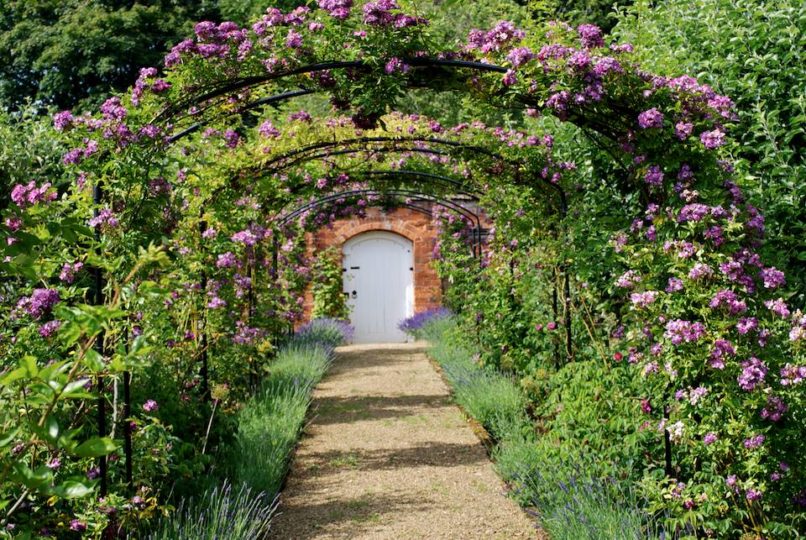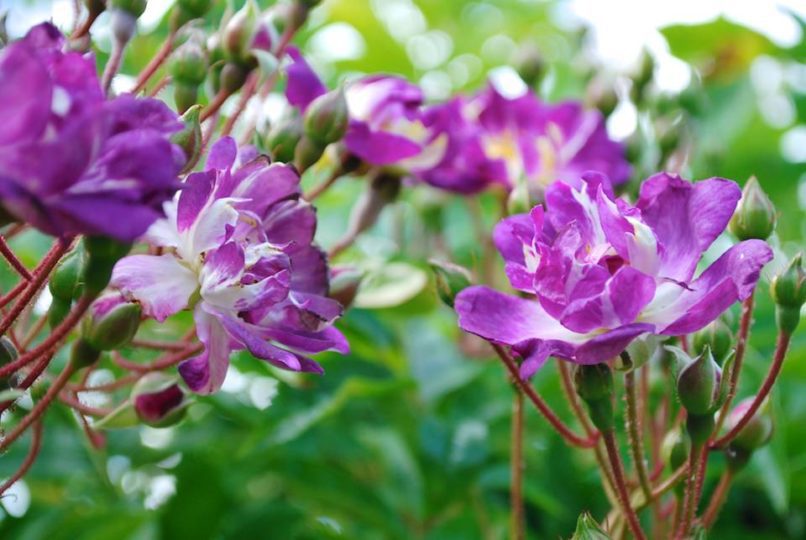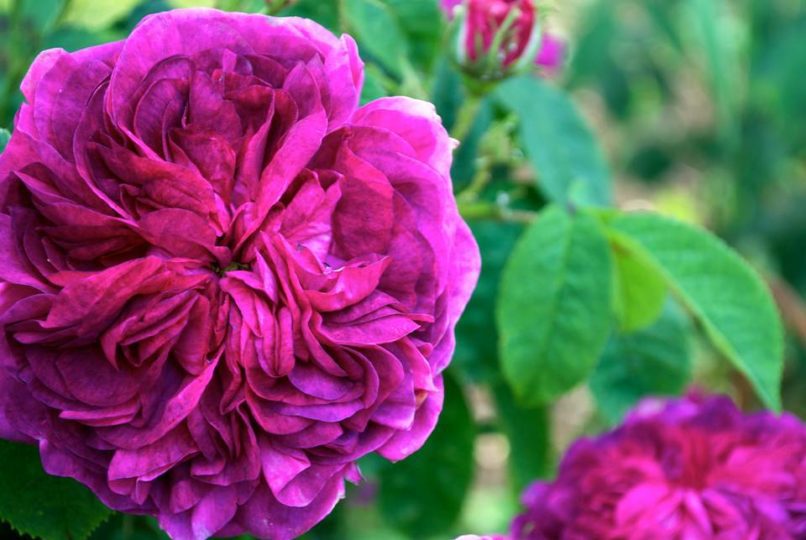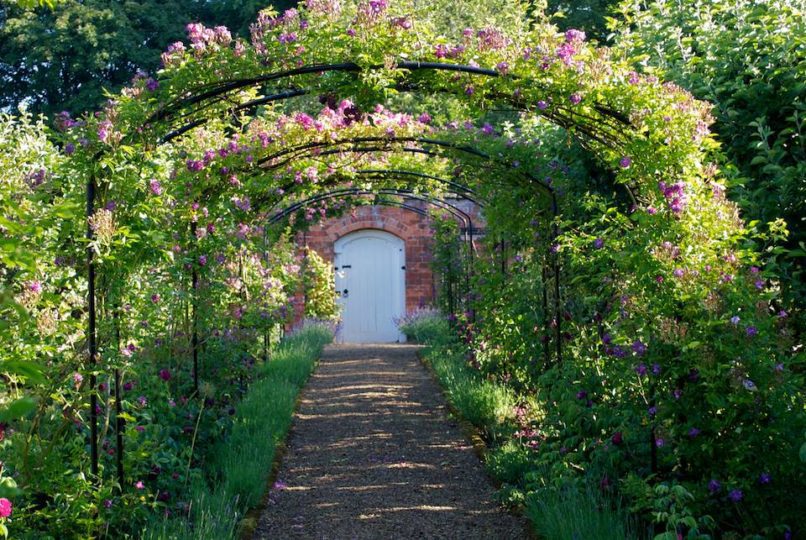Roses, roses everywhere,.. well, that is the plan anyway. For some reason, roses are frequently nominated to be both most loved and most hated of plants. Hatred of them, totally misplaced in my view, is probably down to the perception of their requiring much care and attention.
Roses do indeed require pruning, feeding, disease/pest control, but is that not the same for most other plants? Just think of the attention required for vegetables in a kitchen garden, fruit trees in orchards and perennials in borders? Personally speaking, there is no difference in their requirements and their annual reward continues to be unmatched.
The Rose Walk
Apart from the various specimens that grace the garden walls, in the midst of the walled garden, proudly stands, the Rose Walk. Approximately, 35m in length, the walk is crammed with gracious Gallicas and rigorous Ramblers, embellish the arches. The unusual selection and original colour scheme is completely to the credit of my husband’s artistic parents, who created the Rose Walk several decades ago.
The original arches were unable to support the industrious vigour of the Veilchenblau and were replaced in 2007. To enhance depth of colour, and extend the flowering season, two additional ramblers, of similar colour; Bleu Magenta and Rose-Marie Viaud were planted at that time. Bare root planting in early autumn, proved most successful and is the route we continue to follow diligently. The shrub roses are all Gallicas; Charles de Mills, Cardinal Richelieu, Alain Blanchard and Hippolyte, which must be one of the most beautiful rose genera available. All the roses in the walk, flower once but profusely, and depending on the weather, diligent dead-heading, can extend the flowering season.










Companion planting
One of the conundrums of a Rose Walk, is the decision as to how ‘pure’ one would like it to be. That is, do you keep the planting to purely roses, or does one also include other types of plants? Apart from the, Lavender Angustifolia Elizabeth, which line the path, we opted initially to keep to 100% roses. However, due to the relatively short flowering period and the nature of their growth, ‘gaps’ exist within the planting. Gradually, mindsets changed and we opted to include a planting partner to plug those holes, and in so doing, conveniently helping us to crowd out potential weeds. Inspired by a visit to the RHS Rosemoor Gardens in Devon, we noted the cunning use of Astrantia Major Claret, in their rose garden. This particular Astrantia has the required upright growth habit and most importantly, that breathtaking colour, so similar to the Gallicas. The first batch was planted in 2010, so we hope to see its impact this year.
It is often reported, that Gallicas are resistant to Blackspot and Rust, although we have not found this to be the case. All our Gallicas have succumbed, but it does not impact their flowering. The most effective antidote seems to be Sulphur treatment. Having said that, we do what we can to control it, but one needs to be pragmatic and accept that some level of Blackspot and Rust will always remain.
Rose walk care
- Pruning of the Gallicas takes place once a year, after flowering. The pruning of the ramblers, is done twice a year. Once after flowering and then again (lightly) in early spring.
- The Lavender hedges are pruned after flowering in early autumn.
- Generous mulching (mulch & manure) in early spring throughout the Rose Walk.
- Once or twice a year, additional feeds are provides; Sulphur Soil, NutraRose and/or Toprose (or equivalent)
- For disease resistance; (a) In winter, once all the leaves have dropped off, spray with Jeys fluid to kill off any black spot/rust spores. Make sure all fallen leaves are removed and discarded; (b) Prior to, and after flowering, spray with Sulphur solution; (c) Only if required, general rose fungicide and/or insect spray.
That all translates, to just the two key working sessions in the Rose Walk per year, that is early spring and late summer. In addition to, the (in my view) minor, additional maintenance throughout the year. Not dissimilar to the scale of work required for the Greenhouse borders or the Kitchen Garden, the end result being well worth the effort.
May this infinitesimal editorial contribution, encourage the skeptics or those on the fence, to embrace roses. If that doesn’t work, perhaps the photos will. As far as I am concerned, the spirit of gardening instils care for ones plants, which for the rose is just as it is for any other….
